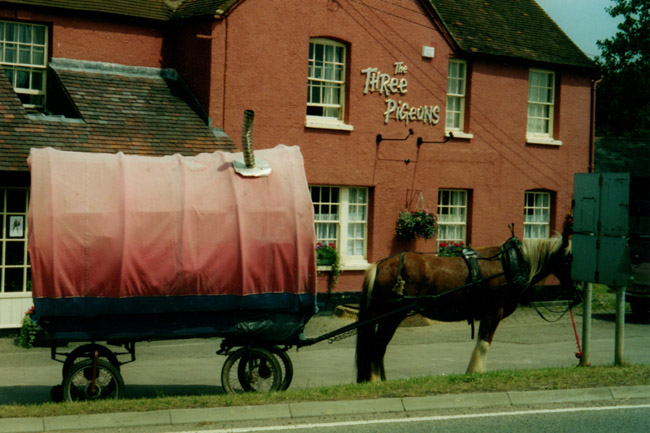No products in the basket.
22nd January 2015
THE THREE PIGEONS, MILTON COMMON, OXFORDSHIRE
LASSCO moved from St. Michael’s Shoreditch to The Three Pigeons Oxfordshire in 2007. The pub we found then was in a terrible state and so were the grounds. We have brought the old Inn back to life. The bar and dining rooms are once again thronged with people – both locals and travellers – and with our Architectural Salvage displayed in the pub itself, its various out-buildings and gardens, The Three Pigeons has found a new role as our Architectural Antiques shop.
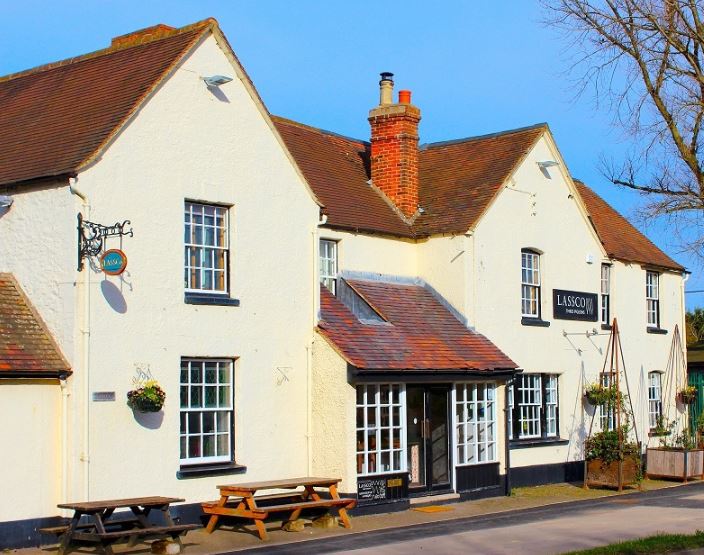
We have been looking into the history of the pub.
THE THREE PIGEONS AT MILTON COMMON: A HISTORY
EARLY MAPS, AUCTIONS & DROVERS
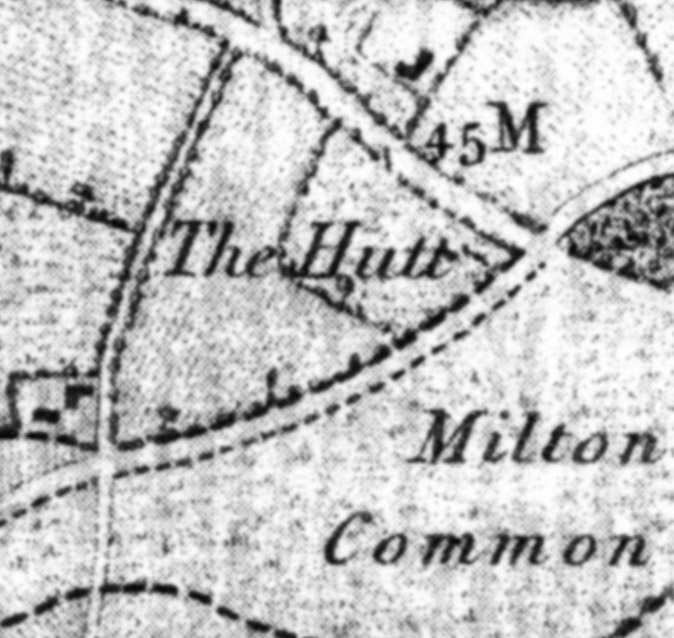
It may be that the earliest indications that there was a hostelry at Milton Common is the appearance of “The Hutte” on early maps. It is however unclear what The Hutte actually was. The site is only a mile from Rycote Palace which was of considerable importance in its day and was regularly visited by Henry VIII and Elizabeth I. (A fire destroyed the palace in 1745; its replacement burned again and was finally dismantled and sold for salvage in 1807 – more information here). Up until the 18th Century, the proximity of the palace and its traffic, can only have had a positive bearing on the significance and success of the Inn.
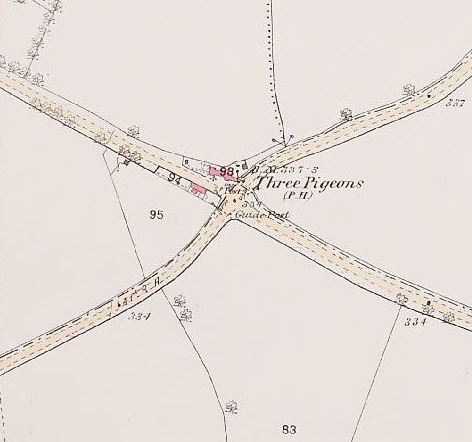
“The Three Pigeons” is a pub name that can be found elsewhere in the Chilterns and originally referred to a trading post for poulterers; taverns seem to have allied themselves to particular trades – it was good business to do so. It has been suggested that the name could have been brought from nearby Thame on the demise of a hostelry of the same name there in the mid 19th Century, however, we have found reference to The Three Pigeons at Milton Common in newspapers dating back to as early as 20th November 1784 (when Rycote Palace was still standing and the gibbet was still in use) when Mr William Green of Waterstock was charged with selling the worldly goods of the deceased Rev. Edward Lewis, also of Waterstock, by auction. Green advertised in The Oxford Journal that the
“Catalogues will be delivered in due Time and may be had at the Inns in Wheatley; the Three Pigeons on Milton Common, at Thame, Tiddington and the Place of Sale.” Oxford Journal 20th November 1784
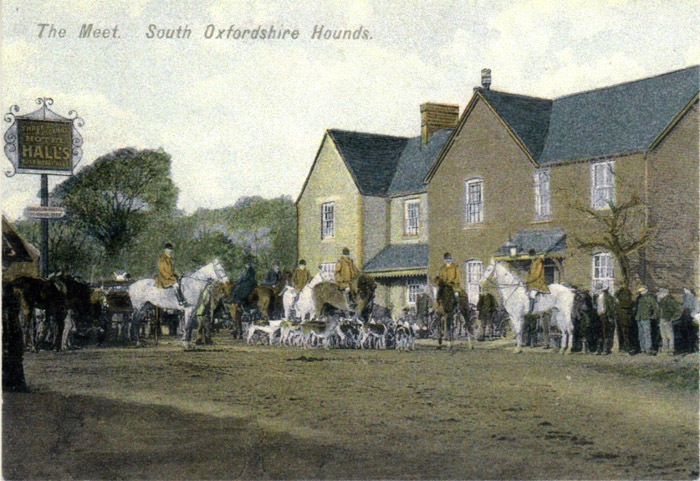
We have an original fly-poster (below) advertising a farm sale, eighty years later, again citing The Three Pigeons at Milton Common as a distributor of the auction catalogues. The pub seems to have been a distribution point for such catalogues through the 18th and 19th Centuries on behalf of various auction houses in Thame, Bicester and beyond.

The pub, sited on the junction of two important turnpikes: London-Oxford (turnpiked around 1715) and Aylesbury-Shillingford (turnpiked around 1770) must have been a crucial meeting point for traders, stage coaches and highwaymen alike. Milton Common is on a ridge. When London-bound it is the last ridge before you get a view of the Chilterns range ahead and the fearsome climb your horses had to undertake up to Stokenchurch. It is an obvious stopping point for sustenance – both human and equine. Moreover, for cattle-drovers the common land would have offered suitable unimpeded grazing and there would have been pens or enclosures available. By 1817, advertisements such as one by a John Rippington, can be found in The Oxford Journal:
“John Rippington Respectfully informs the public, that he has commenced the Business of SALES-MAN, and regularly attends Southall and Smithfield Markets, for selling Beasts, Sheep, and Porkers. All those who please to favour him with their commands may depend on their being punctually attended to and gratefully acknowledged. Cattle taken in at Mr Collett’s, Stow-Wood, and Mrs Atkins’s, Sun Inn, Brill, on Sundays : Three Pigeons, Milton Common, on Mondays; and at the usual places up the road.” Oxford Journal Saturday 13th September 1817
We also know that there was a gibbet here – prominent turnpike junctions being the usual location for reminding footpads and thieves of their likely fate (a separate blog post will follow, detailing the hanging of John Price at the Milton Common gibbet on 11th March 1785: sentenced to “hang in chains” for the attempted murder of Thomas Knight of Great Milton – twenty thousand people came to watch).
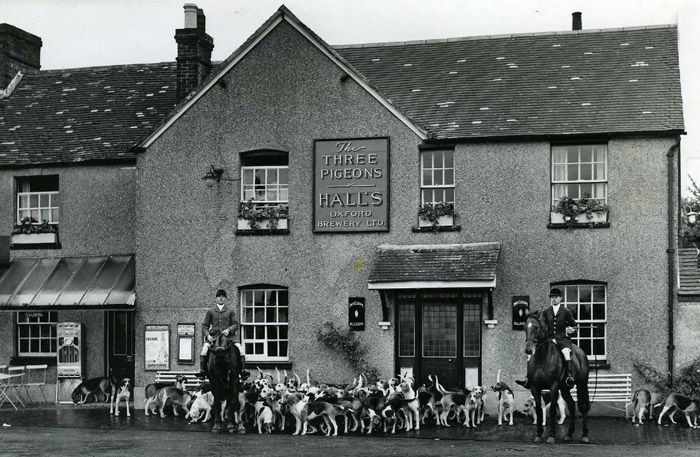
The Three Pigeons was also for many years the meeting point for The South Oxfordshire Hounds – there are a number of images, both in etching and photograph of the hunt assembling. There is also an account of the then Prince of Wales joining the hunt in February 1866. On the day, the Royal party arrived by a special train into Thame, and with a convoy of local dignitaries, stopped for a comfort break at The Spread Eagle before heading up for the hunt at The Three Pigeons. The entire chase of a brace of fox is given a field-by-field account in the Oxford Times until they got to a boggy bit where:
“… the sly ‘un eluded his persuers after a brilliant run. Their Royal Highnesses were well up throughout the whole run, and the splendid manner in which the Princess cleared hedge and brook, and other obsticles, was the admiration of the whole field”. Oxford Times Saturday 17th Feb 1866
The Royal Party lunched at Shirburn Castle with the Macclesfields before re-boarding their train at 5 o’clock for London.
AN EARLY PHOTOGRAPH
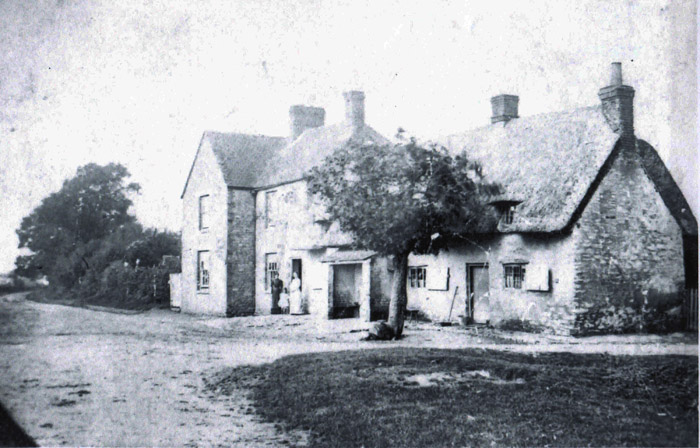
The earliest image of the pub we have found is an extraordinary photograph. It must date to before 1892 (for reasons given below) and we suspect it may be as early as the 1870’s – a time when photography itself was in its infancy. In the shot, the highway can be seen extending towards Oxford on the left (11miles to go) and two women and a child stand watching the photographer at the doorway. The Inn comprises two halves. On the right, a typical Oxfordshire thatched cottage. It probably dates back to before the 17th Century, when it would have been considered sizable. The eaves and lintels are low, with thick well-kept thatch – probably water-reed. The walls are stone-built, presumably from the local clunch that was quarried at Great Milton (comparable cottages can be found in Great Milton, Great Haseley and Little Milton – all within a couple of miles). A deep porch – lined with benches either side is noticeable and would have been a feature offering shelter to any traveller day or night – even if they were not patronising the Inn. Either way, it would be a great spot to sit, have a pipe and a flagon of ale on a sunny evening and admire the view. (Before the M40 motorway came through – changing the junction and embanking the A40 – we think that there would have been a panoramic view from The Three Pigeons – across the common to the Haseley Windmill and the Wittenham Clumps beyond).
The photograph might confirm that an extant low stone-built elevation recently uncovered to the rear of The Three Pigeons – with early casement-sash window apertures – is a surviving original wall of this thatched building. The cottage – and we might conjecture that this is “The Hutte” referred to on the early maps – has been enlarged with what looks, at the time of the photograph, to be a fairly new and sizable extension, on the left. The rather smart two storey addition adds a gable to the frontage. It is stone-built under a tiled roof with dressed quoins to the corners and with double hung sash windows. The extension makes the old cottage, to which it is joined, look decidedly archaic. The latter no longer stands.
THE TALE OF MR GOODENOUGH, THE RAT, THE FIRE, HIS COAT AND THE CHEESE SANDWICH
We have now discovered what happened to the old thatched inn after finding a newspaper article in The Bucks Herald dating to 4th June 1892. The then Landlord, Mr Goodenough, had a mis-hap with his shotgun! It reads as follows (para breaks added):
“FIRE AT THE THREE PIGEONS. – The well-known road-side hostelry, familiar alike to the old stage-coach traveller and the modern cyclist, the centre of many a merry-making and old time incident, known as the Three Pigeons, situated on Milton Common, the junction of the London and Wallingford roads, about 1.5 miles from Great Milton, Great Horsley (sic.), and Tiddington, was on Monday night the scene of a conflagration which resulted in considerable damage to property, and great inconvenience to the occupants.
The house consists of a well-built modern portion and a low thatched part – the remains of the original structure – and the fire appears to have been occasioned in the latter half by a somewhat curious and unusual cause, viz., the discharge of a breech-loading gun at a rat on the roof, by the proprietor of the inn, Mr. J. Goodenough, in the evening. When it was discovered that the thatch had caught fire, an alarm was raised and the inhabitants of the few scattered houses in the vicinity hurried to the spot and assisted in removing the goods from the house into the road. A messenger galloped to Thame for the Fire Brigade, and in the meantime the occupants of the house, assisted by their neighbours, made good use of the pump and buckets.
The news of the fire reached Thame about 9.30, and in about 40minutes time a full muster of the Brigade with their engine was on the spot, quickly followed by P.S.Ayres and others in various vehicles. When the Brigade arrived they found that the fire existed only in the thatch and that the major portion of the furniture, stock-in-trade &c., was out of danger. Locating the engine at a pond, situate in a field at the back they ran out a good length of hose, and directed their efforts to preventing the flames from reaching the new part of the house. The firemen carried out their operations with a despatch and precision which was very creditable to their new captain Mr George Bailey, who took the command for the first time. They applied water to the thatch adjoining the western section of the house until the flames were got under sufficiently to enable them to drag down the straw and cut away the woodwork. This was successfully accomplished, and the principal portion was practically out of danger.
After a time, however, the water supply began to fail, and the fire in the thatch gained on the firemen, until a large portion of the burning mass slid off. About one o’clock the roof fell in, and the inside of the house was filled with smoke and flame. The wind now began to rise, and the smoke ascended in dense clouds; at intervals, broad sheets of lightening burst forth, and momentarily threw a brilliant light on the scene of the conflagration. The thatched roof was completely burnt away, and the interior of the house sustained much damage before the flames were fully extinguished, which was not till between three and four o’clock, when the brigade quitted the spot.
Mr Goodenough’s family were kindly accommodated at their neighbours’, and the work of clearing the refuse and straightening the premises was proceeded with apace on Tuesday morning. It is supposed that the wad of the burnt cartridge was the cause of the fire.”
What a night.
Mr Goodenough’s tribulations didn’t end there though. He and his family seem to have moved back into the new building in lieu of the collapsed burnt half being re-built. Four lads from East London were passing one night in the July and broke-in, thinking that the boarded up ruin was deserted. They stole a couple of coats and some bread and cheese. The incensed Goodenough having heard a noise downstairs, hurriedly harnessed up his horse and set off in pursuit towards Oxford but didn’t find them. So he galloped back past his pub towards London, raised some help in Tetsworth, and before getting to Postcombe caught up with the four rogues, sauntering along in rather familiar looking coats. They were up before the beak in Oxford the following day and took their three-week jail sentence…
“with a light and careless manner, and afterwards, with Mr Goodenough’s permission, feasted on the remainder of the ill-gotten eatables” Oxford Journal 23rd July 1892
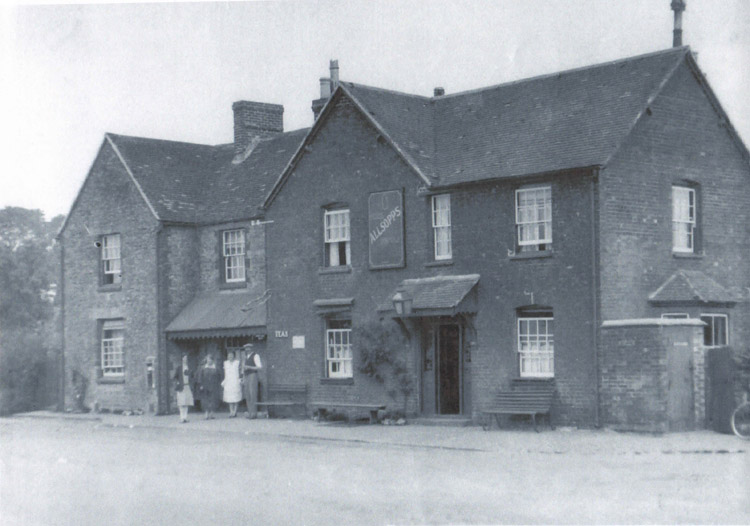
The Three Pigeons was eventually re-built largely as it stands today, the replacement eastern half, adding a second gable to the frontage to match the first, the replacement built in brick. (The railways, by then extending from Thame, via Wheatley to Oxford, meant that brick was more cheaply available in the area).
INTO THE 20TH CENTURY
By the turn of the 20th Century it is noticeable, in the few photos we have, that bicycles are in abundance; cyclists are mentioned, even in 1892, in the above account of the fire. Milton Common is readily reachable by bicycle from Oxford and Oxford was at the fore-front in the production of them. William Morris was one such manufacturer before he turned his hand to the motor car. At The Three Pigeons the motor-car was to change everything.
AR
The Three Pigeons history into the 20th Century will continue in a subsequent blog: The A40 became a busy trunk road within easy reach of London. In the Second War, Italian prisoners were housed in the next field. The controversial arrival of the M40 as it cut through the Chilterns in the late 1970’s – a colossal engineering project – changed things entirely and what the archaeologists found at Milton Common as the diggers came through is of note. The Three Pigeons as a setting in fiction and ultimately how it became the only pub in South Oxfordshire licenced for “Adult Entertainment”, will all be expanded upon.
